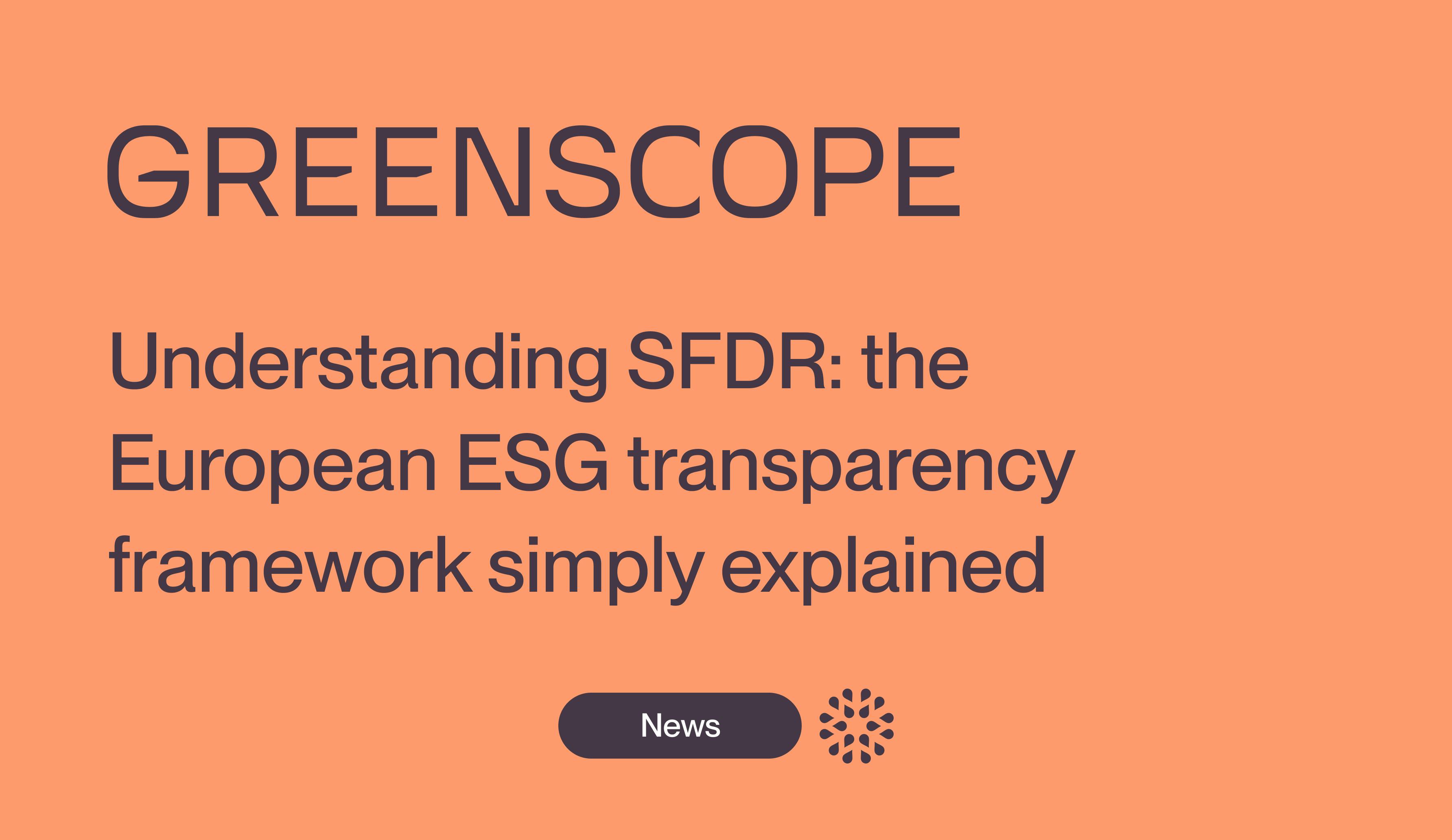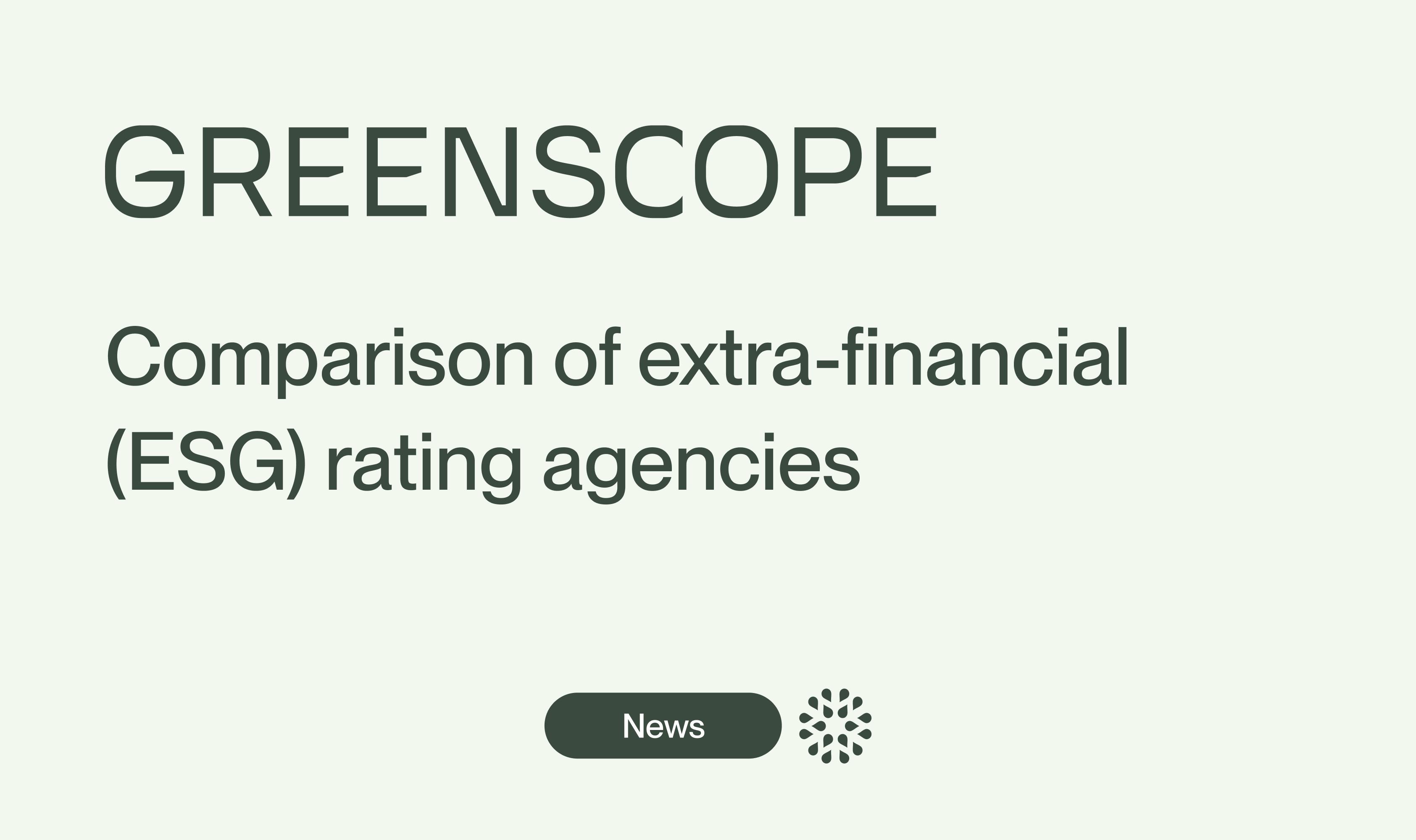ESG Investing: Everything You Need to Know
Performance, compliance, resilience: ESG investing is becoming essential for financial professionals with a long-term perspective

Confronted with environmental and social challenges, ESG investing is emerging as a strategic and responsible solution.
We explain everything you need to know about ESG investing: what its objective is, why it’s increasingly attractive to financial professionals, and how it promises long-term performance. We’ll also review key standards, essential indicators, and the most widespread ESG labels — including those you can truly trust.
What is ESG investing and what is its objective?
ESG investing, or responsible investing, refers to the integration of ESG criteria throughout the entire investment cycle for financial professionals: investment strategy, due diligence phase, and evaluating the performance of portfolio companies during the holding period. These ESG criteria therefore complement traditional financial criteria.
Many actors are engaged in ESG investing: institutional investors, pension funds, banks, asset managers, and even individuals. ESG assets already accounted for over $30 trillion in 2022, and are expected to reach $40 trillion by 2030, according to Bloomberg Intelligence.
The goal of responsible investing is to encourage sustainable and responsible practices among financed companies, ensure better long-term portfolio performance, and more generally, better align investors’ interests with those of society.
Evaluating an investment according to ESG criteria is therefore at the heart of ESG investing: to learn more, read our dedicated article on ESG criteria, or get inspired by our list of 45 custom ESG indicators for asset management firms and investment funds!
Why start an ESG investment approach?
ESG investing is gaining traction and represents a growing share of global assets under management: according to Bloomberg Intelligence (BI), ESG assets are projected to make up over 25% of assets under management by 2030. But why is that? There are several reasons: risk reduction, long-term value creation, responding to growing investor and client demand, and the desire to have a positive impact on society and the environment.
ESG investing and risk reduction
Integrating ESG (Environmental, Social, and Governance) criteria into investment decisions is a proactive approach to risk management. According to the Institute for Energy Economics and Financial Analysis (IEEFA), even as interest in ESG investing may fluctuate, climate risks remain and continue to affect companies and financial markets. Extreme weather events, regulatory transitions, and rising societal expectations expose businesses to significant financial risks if these factors are not adequately considered.
EY also highlights that integrating ESG factors into risk management enables organizations to adopt a more holistic and forward-looking perspective. This approach promotes organizational resilience by identifying not only traditional risks but also sustainability-related ones, such as environmental impacts, social issues, and governance practices. By incorporating ESG criteria, companies can anticipate potential challenges, enhance their reputation, and ensure sustainable growth.
In short, ESG investing is fully aligned with modern risk management practices by offering a thorough understanding of both current and future risks, while aligning financial objectives with sustainability imperatives and supporting the emergence of more resilient organizations.
ESG investing to create long-term value
ESG investing is recognized for its ability to generate long-term value by aligning financial performance with sustainability. A thorough meta-analysis of more than 2,000 empirical studies, shared for example by Label ISR, shows that nearly 90% of them found a positive or neutral relationship between integrating ESG criteria and company financial performance. This correlation suggests that companies adopting responsible practices perform better over the long haul.
Additionally, research conducted by the EDHEC Risk Climate Impact Institute indicates that companies with strong ESG performance show greater resilience to economic and environmental crises.
In summary, integrating ESG criteria into investment decisions is not just about anticipating risks — it is a sound financial strategy. By promoting transparency, social responsibility, and proactive risk management, ESG investing allows companies and investors to build robust, sustainable performance.
Growing investor and client demand for ESG investments
ESG investing today responds to increasing demand from investors and clients. Institutional and retail investors alike now favor products perceived as sustainable: in its study “Fund names: ESG-related changes and their impact on investment flows” (April 2025), ESMA shows that adding ESG terms to a fund’s name leads to a notable increase in investment flows, up to +8.9% in the first year. The effect is even stronger for funds adding Environment-related terms to their name, rather than Social or Governance terms.
Driven by this growing investor and client demand, the number of ESG funds has soared in the past ten years: the proportion of funds with ESG-related names rose from less than 3% in 2015 to almost 9% in 2024, according to ESMA.
However, ESMA warns of the risk of greenwashing inherent in ESG’s popularity. The European authority, along with national authorities such as AMF in France, monitors the use of ESG-related terms in fund names. They check that the proportion of investments made to meet environmental or social characteristics or to achieve sustainable investment objectives exceeds a certain threshold (80%), and when applicable, that exclusion policies are implemented. Consult ESMA’s recommendations.
Thus, rising demand for ESG investments also creates a challenge for regulatory compliance, especially with regulations such as SFDR.
ESG investing: steering the financial sector toward a more virtuous model for society and the environment?
The reasons to adopt an ESG investment approach are numerous, but the discussion about the financial sector’s contribution to ecological and social transition goes beyond those considerations. Many investors now see ESG investing as a key lever for steering finance toward a more virtuous model for both society and the environment.
PRI (Principles for Responsible Investment) signatories commit to acting in their beneficiaries’ long-term interest. They pledge to follow these six principles:
- Principle 1: We will incorporate ESG issues into investment analysis and decision-making processes
- Principle 2: We will be active owners and incorporate ESG issues into our ownership policies and practices
- Principle 3: We will seek appropriate disclosure on ESG issues by the entities in which we invest
- Principle 4: We will promote acceptance and implementation of the Principles within the investment industry
- Principle 5: We will work together to enhance our effectiveness in implementing the Principles
- Principle 6: We will each report on our activities and progress toward implementing the Principles
An increasing number of financial professionals are thus aiming to go beyond their role as financier and taking an active approach:
- By supporting portfolio companies in their transition
- By adopting active shareholder practices
- And by promoting the emergence of more sustainable industry practices through collaboration with other financial and economic actors within associations like France Invest
What are the most common ESG standards and indicators?
Since the late 2010s, several European regulations have been introduced to support the transition to a more sustainable economy.
SFDR requires financial professionals to categorize and disclose the ESG impact of their financial products (articles 6, 8, or 9). The European taxonomy, essential for shaping all European sustainability regulations, defines sustainable activities using technical criteria.
The CSRD directive mandates detailed ESG reporting for some companies, aligned with “ESRS” standards. This reporting is based on the principle of double materiality and must be audited by an independent third party. The CSDDD, in turn, imposes a duty of care on large companies. It is not yet in force in Europe but is inspired by the French legislation already in place on duty of vigilance.
Finally, international standards such as IFRS S1/S2, GRI, or SASB complement this European framework, covered in our article on ESG compliance.
There are many ESG indicators that can be used as part of an ESG investment strategy.
The most common ESG indicators include:
- Environment: GHG emissions (Scopes 1, 2, 3), energy consumption, water usage, waste production, biodiversity management, energy efficiency…
- Social: diversity and inclusion, working conditions (accidents, turnover), occupational health and safety, human rights, customer satisfaction…
- Governance: board diversity and structure, financial transparency, executive compensation, anti-corruption, shareholder rights, risk management…
These indicators should be integrated into a tailored ESG reporting process.
6 ESG investment strategies
There are many ESG investment strategies, depending on the goals pursued. They can be complementary, and the vast majority require ESG criteria to be integrated in advance when evaluating companies (during due diligence or holding period). Here are a few detailed below:
- Exclusion policies: increasingly common among financial professionals, exclusion policies involve not investing in certain predefined companies or sectors. The sectors are often controversial (e.g., arms, extraction of natural resources, tobacco or fur industries...) due to their impact on human rights, local communities, animals, or the environment. The exact outline of these policies should be defined by the investor.
- Shareholder engagement / active ownership: active ownership has grown significantly in recent years. Investors, as shareholders, actively vote at shareholder meetings, seeking to influence company behavior. This engagement usually takes place within the framework of a long-term dialogue with the company.
- Positive screening: investing in companies with better ESG characteristics than a reference index
- Best-in-class: investing in the leading companies of a given sector in terms of ESG performance
- Thematic investing: usually led by thematic funds, this strategy involves investing in themes set out in the fund’s investment thesis. An increasing number of funds are focusing on sustainability-related themes, such as sustainable agriculture or sustainable marine industries.
- Impact investing: impact investing goes beyond thematic investing. It aims to address social or environmental issues through investment, while also generating financial returns. E.g., microfinance
How to recognize ESG investments: ESG labels
To help you identify “sustainable” businesses or ESG investment products, there are many labels certifying that specific ESG criteria are being met.
The criteria used, their rigor, assessment methods, and the level of institutional recognition all vary. Understanding these aspects will help you choose which company or financial product to invest in, or select the one best suited to your ESG strategy.
The ESG experts at Greenscope can support you with your reporting and regulatory compliance: contact us to learn more.
Our latest articles

EDCI - Understanding the ESG Data Convergence Initiative to harmonize ESG reporting in Private Equity
Simplify and standardize your ESG data with EDCI.

Understanding SFDR: The European ESG transparency framework made simple
Understanding SFDR means understanding what structures sustainable finance in Europe. Requirements, tools, impacts: let's break it down.

CSR News - November 2025
Discover key developments: ongoing projects, standards updates, new official documents.

Comparison of ESG rating agencies: role, methodology, and key players
ESG ratings now shape investment decisions. Learn how extra-financial rating agencies assess sustainability-related issues.



